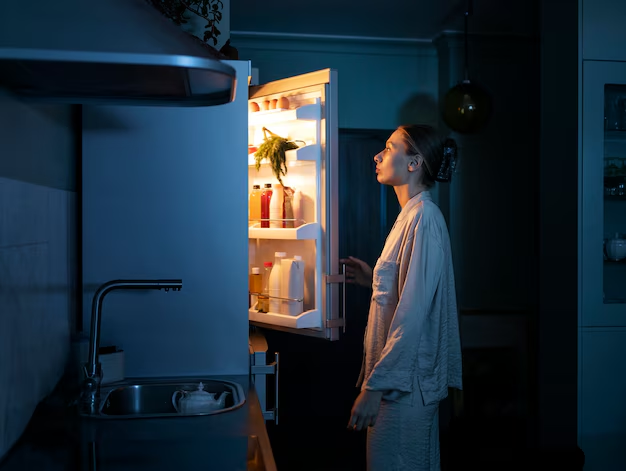Is Your Refrigerator Not Cooling? Here’s What You Need to Know
Have you ever opened your refrigerator to find your favorite foods not as cold as you expect them to be? A refrigerator failing to keep its cool is a common household issue that raises concerns about food safety and efficiency. If you’re wondering why your refrigerator isn’t getting cold, this guide will explore potential reasons and practical solutions for getting it back to its chilly best.
Understanding How Your Refrigerator Works
Before diving into why your refrigerator might not be cooling, it helps to understand how it operates. Refrigerators remove heat from inside the unit to keep food cold. This process involves several key components:
- Compressor: This pumps refrigerant through the system.
- Condenser Coils: These coils help dissipate heat.
- Evaporator Coils: Here, the refrigerant absorbs heat from the fridge.
- Thermostat: This regulates the internal temperature.
Each component plays a crucial role, and disruptions in any of these can affect cooling performance.
Common Reasons for Non-Cooling Refrigerators
1. Inadequate Thermostat Setting
Sometimes, the solution might be as simple as adjusting a dial. Ensure your refrigerator's thermostat is set to the recommended temperature, typically around 37°F (3°C) for the fridge section and 0°F (-18°C) for the freezer.
2. Blocked Vents
Airflow is essential for maintaining an even temperature distribution. Ensure vents inside your fridge and freezer are not blocked by food containers or ice buildup.
3. Dirty Condenser Coils
Condenser coils, usually located at the back or bottom of the refrigerator, can accumulate dust and debris over time. This buildup can reduce the coils' efficiency in dissipating heat.
Maintenance Tip: Clean your coils at least twice a year for optimal performance. Use a vacuum or a coil brush to gently remove dust and dirt.
4. Faulty Door Seals
Your refrigerator's door seals create a barrier to maintain the cold air inside. Over time, these gaskets may wear out, allowing warm air to enter.
Check: Close a piece of paper in the door. If it slides out easily, it might be time to replace the seals.
5. Issues with the Compressor
The heart of the refrigeration process, a malfunctioning compressor, can lead to inadequate cooling. Listen for a humming sound which is a good indicator of a functioning compressor. If it’s silent or clicking, it may need professional attention.
6. Malfunctioning Thermostat
If the thermostat is broken, it might not signal the system to cool appropriately. Consider testing the thermostat with a multimeter for continuity.
7. Defective Evaporator Fan
The evaporator fan helps circulate the cold air across the refrigerator. If it’s not working, certain areas may remain warm. Check for unusual noises, which could indicate a malfunction.
Addressing the Issue: Basic Troubleshooting Tips
Before calling a technician, you can troubleshoot some problems on your own:
- Verify Power Supply: Ensure your fridge is receiving power. Check the fuse box and any power switches.
- Assess the Placement: Ensure it's not too close to the wall, which may block airflow to the condenser coils.
- Remove Excess Frost: A thick layer of ice in the freezer can impair performance. Defrost manually if needed.
- Reorganize Contents: Proper organization avoids blocking vents and improves efficiency.
When to Call in the Experts
While many issues can be handled with some DIY effort, certain problems require a professional touch:
- Persistent Temperature Problems: If the fridge remains warm despite your efforts.
- Complex Component Issues: If the compressor or fan motors need repair or replacement.
- Electrical Problems: Contact a qualified technician for any problems beyond basic troubleshooting.
Bonus Tips for Maintaining Your Refrigerator's Health
Keeping your fridge in good shape can prevent future issues. Here are some maintenance tips:
- Regular Cleaning: Clean spills immediately and deep clean the interior monthly.
- Proper Stocking: Overcrowding can affect airflow; keep it organized.
- Level the Fridge: Ensure it’s levelled on the floor to function optimally.
Summary: What to Do When Your Fridge Isn’t Getting Cold
Here’s a quick reference guide to help troubleshoot and maintain your refrigerator:
- 🛠️ Check Thermostat: Ensure it's set correctly.
- 🌬️ Ensure Airflow: Keep vents clear and inspect seals.
- 🧹 Clean Coils: Regular cleaning enhances efficiency.
- 🧊 Monitor Frost: Defrost when necessary.
- 🔗 Listen for Sounds: Identify issues with the compressor or fan.
- 📞 Know When to Call Help: Trust experts for complex repairs.
By following these guidelines, you can restore your refrigerator’s cooling efficiency and keep your food fresh and safe. Whether it’s a simple fix or requires professional service, addressing the issue promptly ensures your appliance continues to serve your household effectively.
